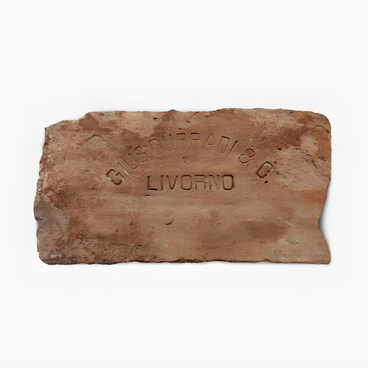This brick without a manufacturer’s stamp was produced before the Russian Revolution of 1917. It was donated to the museum by a resident of Taganrog who picked it up near the old railway station building after a part of its main façade collapsed. In the same glass case, there are also floor tiles from the station interior.
When the railway came to Taganrog, it was a milestone event in the city’s economic history as sea transportation was no longer able to meet all the trade needs. Yakov Solomonovich Polyakov, a banker and entrepreneur who founded his own trading company, contributed greatly to establishing railway communication in the area.
In 1868, he signed an agreement with the Russian government to construct a railway line from Kursk to Rostov, via Kharkov, Lozovaya, Gorlovka, and Taganrog. The line had a total length of 763 versts (over 800 kilometers). The large-scale project was completed in the record-breaking time of 20 months. The Kursk-Kharkov-Azov Railway connected Central Russia with the Donbass region and the ports in the Azov and Black Seas, covering a vast area of grain production from Kursk to the Priazovye.
The railway station was constructed in 1869 and became one of the first public buildings in Taganrog. It was built in the traditional brick style, typical of the rational architecture of the last third of the 19th century, without plastering and with a decorative masonry façade. The two-story, elongated building was equipped with lateral avant-corps, parts that jut out from the main façade.
In the central part of the first floor, there was a through passage leading both to the station forecourt and the platform. In the left section of the building, there was a spacious waiting room for third class passengers. On the opposite side, there were rooms for first and second class passengers and the so-called imperial hall. In front of the station, there was the Yarmarochnaya (Fairground) Square currently known as the Vosstaniya (Uprising) Square.
The architect in charge of the station’s construction was Sergey Iliodorovich Zagoskin. He came from a noble family and was a graduate of the Institute of Civil Engineers. Sergey Zagoskin dedicated more than ten years of his life to Taganrog. During that period, he supervised the construction of significant public buildings, including the District Court and the Mariinskaya Gymnasium.

